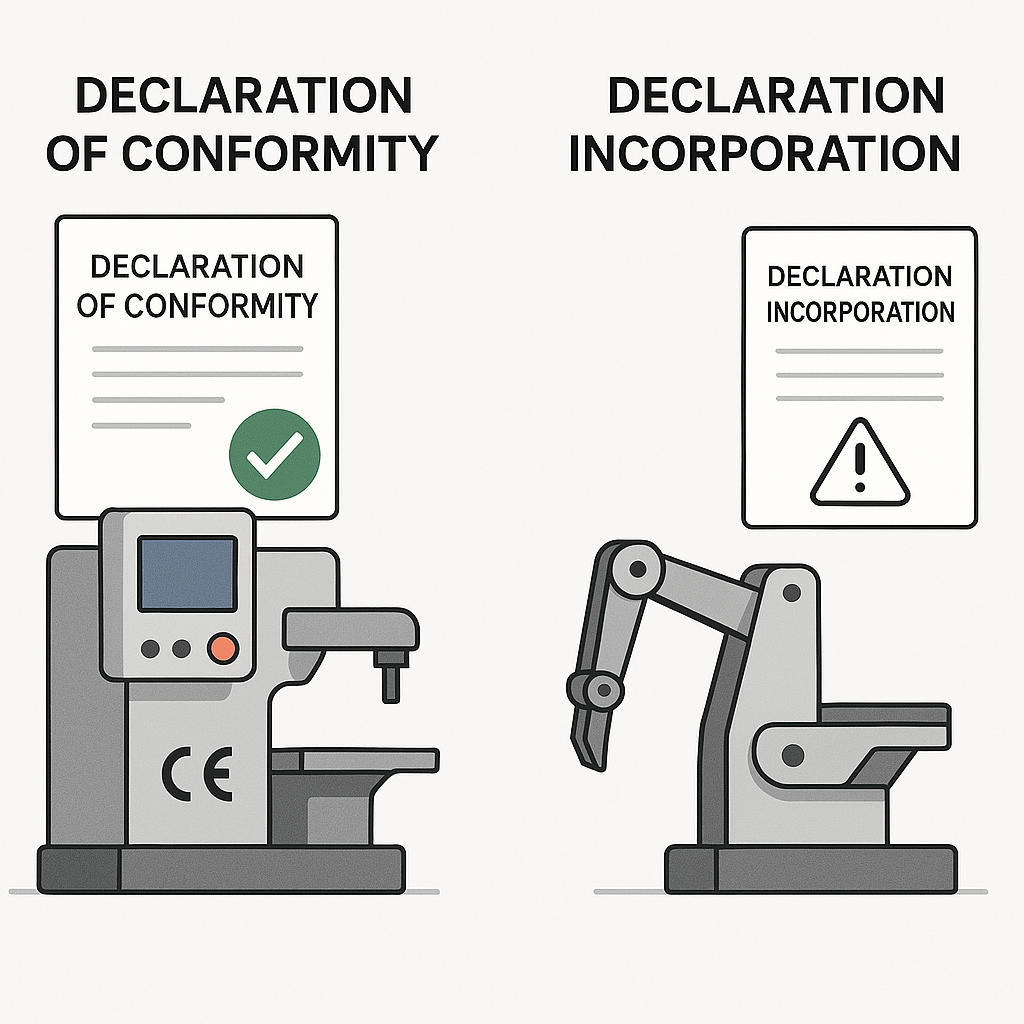Introduction
When it comes to supplying the UK market with a product, the correct documentation is essential. A common factor to adhere to Regulations is to supply your product with either a DoC or a DoI, but which one? This blog post will cover the key differences between a DoC and DoI. All while providing guidance on which document you should supply with your products.
What is a DoC and DoI?
DoC is the abbreviation of ‘Declaration of Conformity’. It is a document supplied by an OEM to show their product is compliant with the applicable Regulation. As well as any associated Standards used for the products development.
DoI is the abbreviation of ‘Declaration of Incorporation’. This document is supplied by an OEM for partly completed machinery in line with the Supply of Machinery (Safety) Regulations 2008. A DoI is used to show that the partly completed machinery is compliant with the regulation and the applicable Standards.
When to issue a DoC?
A DoC must only be supplied with ‘complete machinery’. Complete machinery is a product which is ready for its intended use upon delivery. It is fully assembled, tested and does not require any integration in order to perform its intended use.
To supply a DoC a manufacturer has taken full responsibility for the compliance of their product. This means they have;
- Conducted the relevant risk assessment
- Designed their product to meet all essential health and safety requirements (EHSRs) outlined in the applicable Regulations
- Compiled the relevant technical documentation
- Conducted a conformity assessment
- Applied a UKCA mark (or CE mark)
So, machinery supplied with a DoC can be assumed to be safe. Thus, is ready to be placed on the market and used for its intended purpose. All without any significant safety related work by the end user.
When to issue a DoI?
A DoI must only be supplied with ‘partly completed machinery’. Partly completed machinery is a product which in itself cannot be used for any intended purpose upon delivery. It is not fully assembled and requires further integration to perform its intended use.
To supply a DoI the manufacturer only takes responsibility for the compliance of the sections they have supplied. They do not take responsibility for compliance after integration. The manufacturer must also supply assembly instructions for their product. This is to show compliance with the Supply of Machinery (Safety) Regulations 2008.
Partly completed machinery will never come UKCA or CE marked. This is because it can only bear the mark upon final integration. The final assembly must be certified. At which point the whole assembly will be supplied with a DoC to show compliance.
Why do you need to understand the difference?
Understanding the differences between the two documents is fundamental in ensuring your product is compliant with UK Regulations. Supplying incorrect documentation with your product not only puts you at risk of potential legal implications but also risks the health and wellbeing of your clients if you are supplying unsafe equipment.

